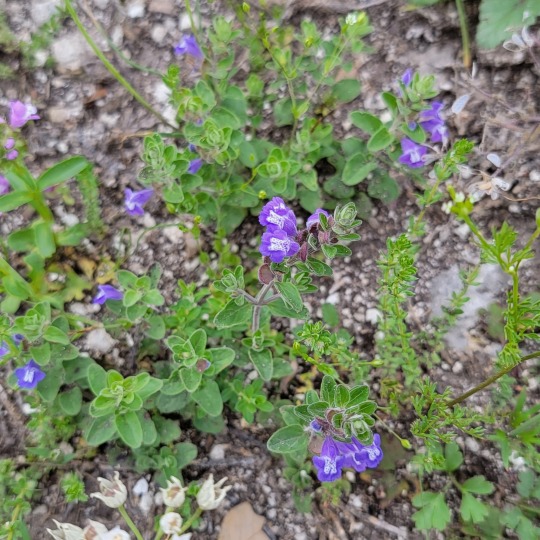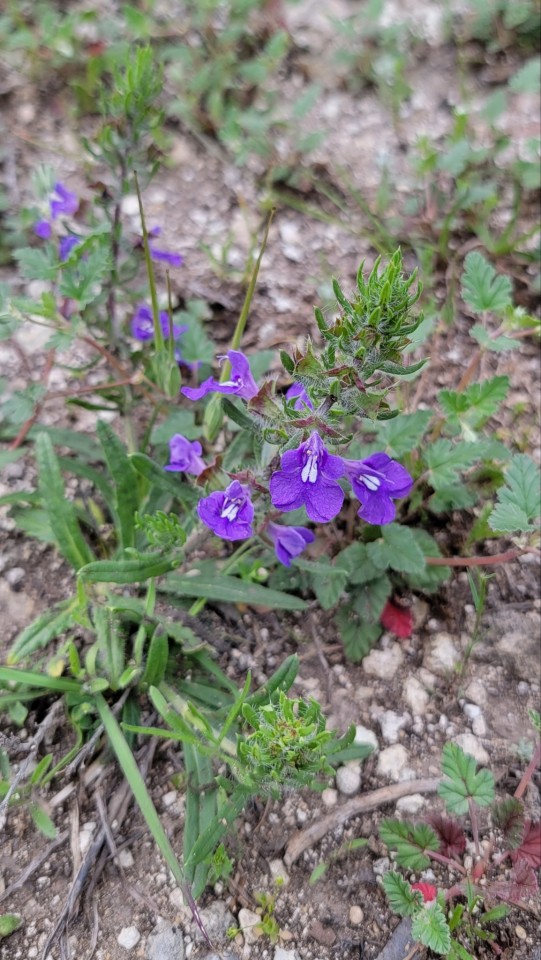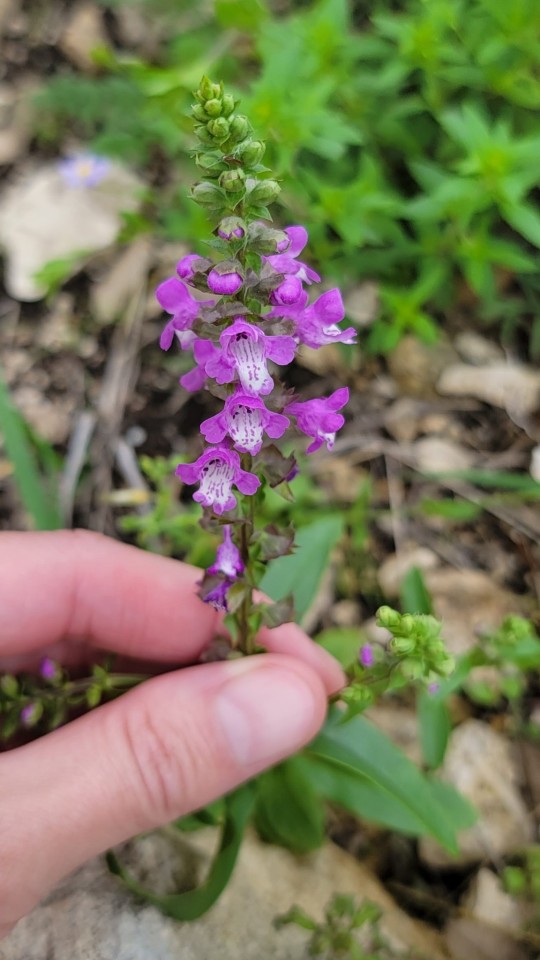#lamiacea
Explore tagged Tumblr posts
Text

Falsa ortica macchiata (Lamium maculatum L., Lamiaceae)
35 notes
·
View notes
Text

Salvia 'Marine Blue'
The origins of this blue-flowered Salvia are not clear, but it is sometimes listed as a hybrid of Salvia chamaedryoides, from the Chihuahuan Desert region of northeastern Mexico. This may be so, since that species also has blue flowers and gray leaves. In any case, the vivid blue flowers in winter are a great complement to the many winter-flowering aloes and ice plants at the Ruth Bancroft Garden, since none of these has a blue flower.
-Brian
23 notes
·
View notes
Text
'Tism won again! 🎉
Re:that post about invasive mints and the addition about outcompeting them with related plants, you can look up native lamiaceae species if you're still worried about replacing one invasive species with another! If you live in the USA, uswildflowers.com lets you search by state, and if you wanna narrow your search results even more, look up [plant family] native to your ecoregion!

There are different-level ecoregional maps for each state too--

--and some species only occur in the wild within unique subregions. For example, there's a Brazos mint, or rattlesnake flower, that only grows in sandy soil within the post oak belt in Texas, and the post oak savannahs only show up within the east central Texas plains on a level IV-inclusive map.
And I dunno about anyone else, but there's something special about meeting some of your more exclusive neighbors.
#mint#lamiaceae#invasive species#native plants#ecoregion#environmentalism#gardening#media#website#tldr#etc
361 notes
·
View notes
Text

Scutellaria montana / Largeflower Skullcap at the Sarah P. Duke Gardens at Duke University in Durham, NC
#I've been posting a lot of these but there was a big beautiful patch#And none of my pictures get close enough to capturing their beauty to satisfy me#So I keep trying#Scutellaria#Lamiaceae#Skullcap#Native plants#Native flowers#Wildflowers#Plants#Flowers#Nature photography#photography#photographers on tumblr#Sarah P. Duke Gardens#Duke Gardens#Duke University#Durham#Durham NC#North Carolina#🌺🌻#Scutellaria montana#Largeflower Skullcap#Mountain Skullcap
35 notes
·
View notes
Text

Poziewnik pstry - Edmonton hempnettle - Galeopsis speciosa Poland, August 2019
#flowers#wildflowers#herbs#nature photography#wildlife#Lamiaceae#photographers on Tumblr#original photography#Europe#Poland#Polska#European nature#green#white#blooming
32 notes
·
View notes
Text

Prostanthera striatiflora
#Prostanthera striatiflora#jockey’s cap#striped mintbush#striated mintbush#plants#flowers#nature#wikipedia#wikipedia pictures#wikimedia commons#shrub#shrubbery#tracheophytes#angiosperms#eudicots#asterids#lamiales#lamiaceae#prostanthera
31 notes
·
View notes
Text

Westringia fruticosa cv.
Colac, Vic
30-JAN-2025
#australia#victoria#colac#flowers#australian natives#native flowers#purple#purple flowers#coastal rosemary#asterids#lamiales#lamiaceae#westringia#westringia fruticosa
5 notes
·
View notes
Text
Johnny’s Seed catalogue 2025:
Sunshine VX Max II: This iconic yellow corn and 2017 bestseller has been patched and updated so that it no longer causes nearby wandering cows to clip through the ground, getting eventually trapped in the mantle of the Earth. Also balance patches to improve resistance to mosaic viruses and crown rot.
Misc: Still working on patch for infinite mint exploit that replaces all local vegetation with Lamieaceae members due to glitch regarding plant aggression.
#alex says words#seriously though keep mints in pots#Rosemary doesn’t like pots and needs the ground but that one doesn’t spread underground like other mints#you still have to trim the woody Lamiaceae though to keep them from crowding stuff out even if they’re not as insidious
7 notes
·
View notes
Text









Purple part 3: Drummond's skullcap (Scutellaria drummondii), Texas sage (Salvia texana), and prairie brazoria (Warnockia scutellarioides)
21 notes
·
View notes
Text

Wild Bergamot Monarda fistulosa Lamiaceae
Photograph taken on July 18, 2023, at Silver Creek Conservation Area, Ontario, Canada.
#wildflowers of southern ontario#wild bergamot#bergamot#pink#Monarda fistulosa#Monarda#Lamiaceae#Silver Creek Conservation Area#Silver Creek#conservation area#Ontario#Canada#wildflowers#wildflower#flora#flowers
57 notes
·
View notes
Note
Fave type of tree?
well if ure expecting an answer like "oh i like oak trees" then id say my fave species to encounter on a day by day basis would be Robinia pseudoacacia!! the leaves are SO SO soft!!!!! and i do love me a nice Bean Flower :3c
but if i take ur question literally then id say any tree that can perform C4 photosynthesis :333 theres literally only like 3 or so species in the WHOLE WORLD that can do that!!! like C4 photosynthesis is just THAT rare in trees!!! iirc theyre all in Hawaii
and theyre all Euphorbias of course heheh 😌😌 which is how i know of them
#euphorbias my beloved#also. i always say that im charmed by Lamiaceae (mint etc) flowers (and flowers in the Lamiales order in general)#but i DO definitely enjoy a nice Bean Flower now and then (Fabaceae)#mine#plants
11 notes
·
View notes
Text

Falsa ortica macchiata (Lamium maculatum L., Lamiaceae)
36 notes
·
View notes
Text


Salvia chamaedryoides
Salvia is a very large genus in the Lamiaceae, or Mint Family, and the various species differ greatly in their drought tolerance, their cold tolerance, their flower color, and their size. Salvia chamaedryoides is on the small side (up to a foot and a half tall, or 46 cm), with good drought tolerance and able to endure winter lows down to about 10° F (-12° C). Its very pale leaves and beautiful blue flowers make it a garden standout. From the Chihuahuan Desert region in northeastern Mexico.
-Brian
25 notes
·
View notes
Text
Lamiagirl drinking a mint tea: this just feels natural to me for some reason!
#why the fuck is it called lamiaceae??#the etymology is completely orphaned#probably some equivalent of calling aomething witches nettle and eventually just called its family the 'witch family' but ugh#botany is frustrating sometimes#girl
12 notes
·
View notes
Text

Xylocopa virginica on Salvia involucrata / Eastern Carpenter Bee on Roseleaf Sage at the JC Raulston Arboretum at North Carolina State University in Raleigh, NC
#Xylocopa virginica#Xylocopa#Apidae#Salvia involucrata#Salvia#Lamiaceae#Eastern Carpenter Bee#Carpenter Bee#Roseleaf Sage#Sage#Native bees#Native insects#Native pollinators#Bees#Insects#Pollinators#Plants#Flowers#Nature photography#photography#photographers on tumblr#Jc raulston arboretum#north carolina state university#Ncsu#nc state#Raleigh#Raleigh NC#north carolina#🌺🌻
17 notes
·
View notes
Text
lavender, catnip, and eucalyptus are all mints
10 notes
·
View notes